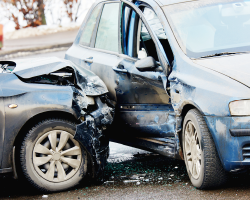Drunk Driving and Drugged Driving—Big Problems on Our Roads

Drug and alcohol abuse can rob us of our family members and loved ones, our friends, our coworkers, and even our own lives in many different ways. Substance abuse with drugs and alcohol greatly impairs our abilities, reducing our cognitive function, our mental capacity, and our physical dexterity. When we elect to misuse substances, we take a great deal of risk, including the risk of loss of life due to drug and alcohol-impaired driving fatalities.
This is still a big problem. While it is true that drunk driving is not as prominent or as lethal as it once was (more on that later), it is also true that drunk and drugged driving issues are still extremely problematic and serious. Unfortunately, tens of millions of Americans drink alcohol and then drive, or do drugs and then drive. Tragically, it is a very common problem and needs to remedied once and for all.
Drunk Driving Statistics

According to the Centers for Disease Control and Prevention, every day, twenty-nine people in the U.S. die from motor vehicle crashes that in some way involve alcohol. That is a person dying from drunk driving every fifty minutes.
Drunk driving is an expensive problem, too. The United States spends about forty-four billion dollars every year attempting to curb drunk driving. But still, the problem is there, more or less unmoving.
In 2016, about ten-thousand, five-hundred people died from alcohol-impaired driving, a cruel statistic to say the least. That number accounted for about twenty-eight percent of the total number of traffic deaths that year. If we could completely eliminate drunk driving, we would reduce vehicle-related fatalities by almost one-third.
And the above information only shows the deaths from drunk driving. Far more people are injured in drunk driving car crashes than those who lose their lives from these incidents. According to The Berkshire Eagle, about two-hundred ninety-thousand people were injured as a direct result of drunk driving in 2015..
Also according to Mothers Against Drunk Driving, about twenty-eight million Americans drink and drive every year. And about ten million people do drugs and drive every year. This makes for over three-hundred thousand incidents of impaired driving every day, with only about two-thousand, eight-hundred arrests per day. Almost across the boards, people are getting away with this.
Drugged Driving Statistics

Drugged driving is now a serious issue. According to the Centers for Disease Control and Prevention, sixteen percent of motor vehicle crashes involve a drug.
As marijuana has become increasingly accepted and legalized across the nation, marijuana-related traffic accidents and deaths are also becoming more prominent. Marijuana users are twenty-five percent more likely to get in an accident when driving than non-marijuana users. Thirteen percent of people driving at night or on the weekend are said to have marijuana in their systems. Seven percent of drivers involved in fatal traffic accidents test positive for THC.
The National Institute on Drug Abuse If this is a different article on the MADD website it needs a new reference.has gathered information on drugged driving. But since alcohol-impaired driving causes about twenty-eight percent of traffic deaths and drug-impaired driving causes about eighteen percent of motor vehicle deaths, drug intoxication and alcohol inebriation combined are the cause of about forty-six percent of all deaths.
Drugged driving is also growing more common, thanks to marijuana legalization, but also thanks to the fact that prescription drugs are becoming far more common in our society. About twenty-two percent of all drivers who are tested do test positive for having used impairing, mind-altering prescription drugs. [Reference/citation for the stat?]
A Problem That Affects Us All
One of the particularly troublesome factors present in drunk and drugged driving is that this is one of the main ways in which drug users and alcohol misusers put everyone else’s lives at risk. On the one hand, we don’t want to stigmatize or stereotype addicts because of their harmful life choices, but on the other hand, we do need to recognize the danger that they place us in when they choose to misuse substances and then get behind the wheel of a car.
Thousands of innocent lives are lost merely as the effect of another’s driving while under the influence of drugs and alcohol. This is a cruel way to die, and it is a cruel experience that the family members and loved ones of victims must face. But rather than criminalizing or judging addicts for their harmful choices, we must use this information as extra incentive to do everything within our power to reduce the prevalence of drunk and drugged driving.
Addressing a Life-Threatening Issue
According to Mothers Against Drunk Driving, drunk driving fatalities have been cut in half since 1980. And this is good news. Unfortunately, drugged driving fatalities are still a major, growing problem. [Reference/citation?]
And really, both issues are still problems until their statistics have been reduced to zero. It’s splitting hairs to try and measure one problem’s risk and danger as being altogether more severe as another’s. Both issues are dire.

Here are some ways in which we can reduce the prominence of drunk and drugged driving:
- We need to raise awareness of the problem of drunk and drugged driving. Getting information out to make the public aware of the problem is the first step towards reducing it.
- Currently, there exists very little technology and methods for discovering whether or not a driver is under the influence of drugs. Drugged driving is still a relatively new problem, whereas drunk driving has been around for many decades. We need to support new ideas and new methodology for detecting drugged driving.
- Reporting incidences of odd driving behavior goes a long way to reducing the prevalence of this behavior. Drivers and their passengers need to report drunk and drugged driving on the roadways when they see it, even if it is only a suspicion.
- According to CNN Health, drugged driving killed more people in car crashes in 2015 than drunk driving did. We need to start training law enforcement and even good Samaritans on the risks of drugged driving, how to spot it, when and where it happens most often, what it looks like, how to address it, etc.
Tackling a problem as dire as this will not occur overnight. But we have to start somewhere because too much life is lost every year simply because people operate motor vehicles while under the influence of substances. And that is a tragic loss of innocent life.
Sources:
- https://www.cdc.gov/motorvehiclesafety/impaired_driving/impaired-drv_factsheet.html
- https://www.madd.org/statistics/
- https://www.cnn.com/2017/04/27/health/drugged-driving-death-rates-report/index.html
- https://www.drugabuse.gov/publications/drugfacts/drugged-driving
- https://www.berkshireeagle.com/stories/stay-sober-when-driving,493122


 ®
®